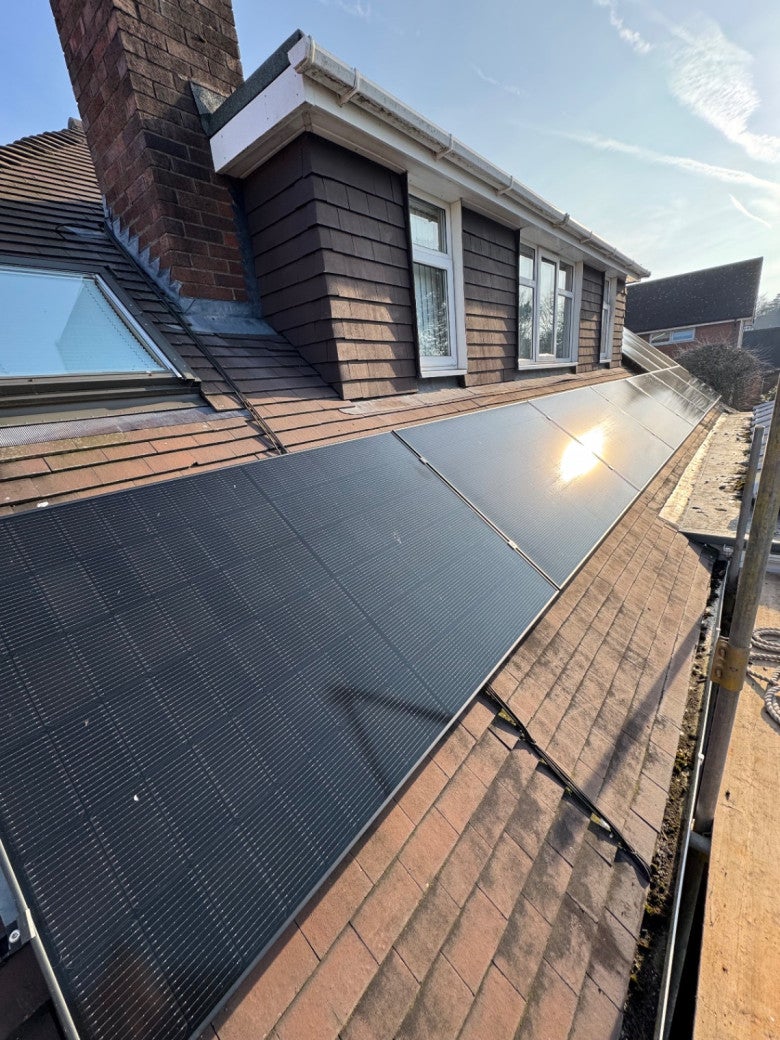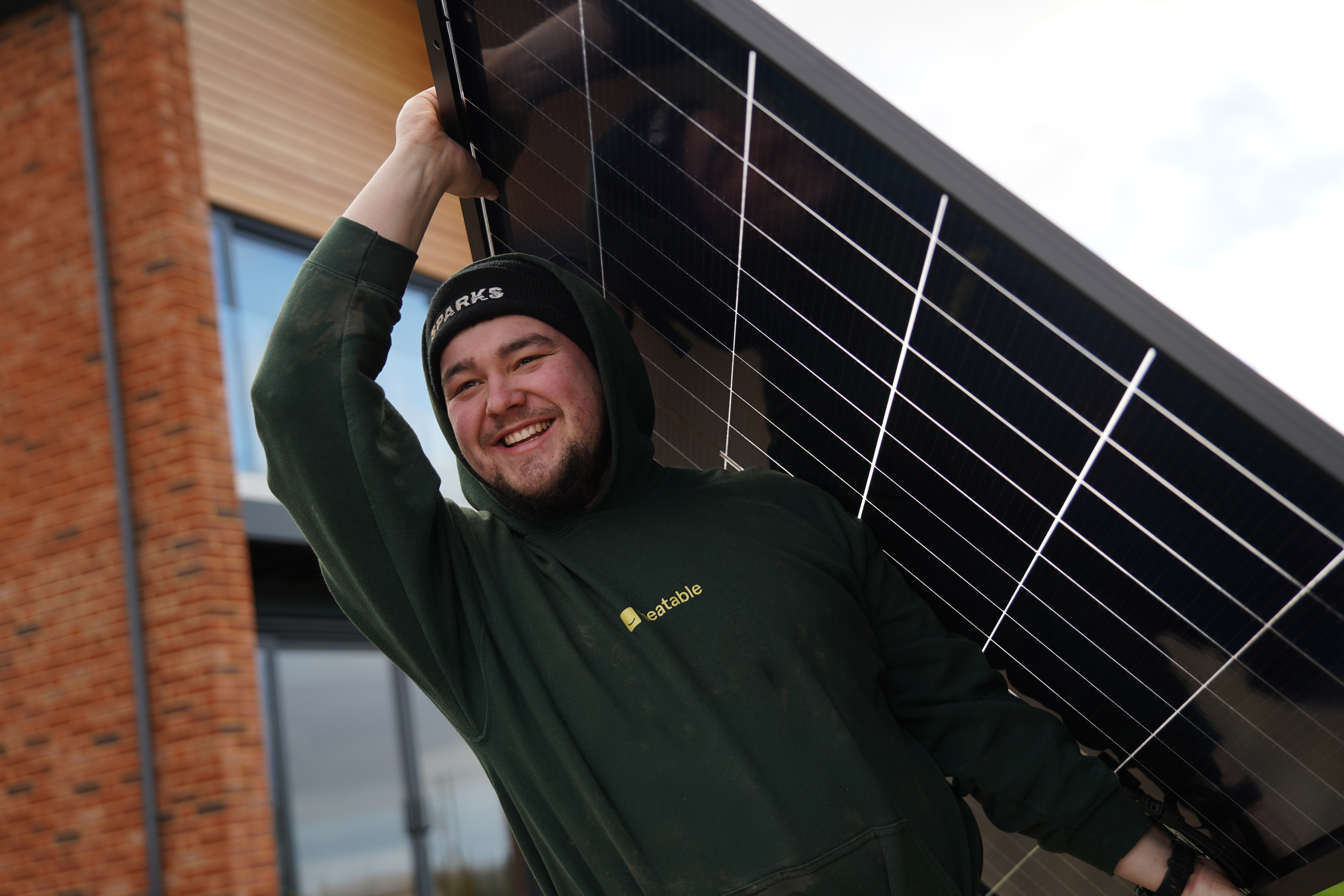The Independent's journalism is supported by our readers. If you submit a form or click links to other sites on this page, we will earn commission.
What are the best solar panels to buy?
Your choice can depend on which installer you go with, as they’ll have brands they prefer to buy from

There are plenty of brands to choose from when it comes to the best solar panels to buy, with familiar tech brand names mixing with relative unknowns.
Much of your choice will depend on which installers you choose to go with, as they will have brands they prefer to buy from, if only to make use of bulk purchasing.
There are plenty of brands to choose from, with many being Chinese names you might not be familiar with. But a number of these are big names in the clean energy world, with good track records of quality and durability, as we shall see below.
Most panels have a life span of 30 years, and if you are going to the trouble of putting up scaffolding and having them installed on your roof, then these are the ones to go for, since installation is usually the largest part of the cost. You won’t want to have to replace them in a hurry.
What should I look for?
The numbers you will be looking for are the price, warranty, efficiency – up to 25 per cent or so is possible, degradation (they age, albeit slowly) and power output.
There’s plenty of competition in the solar market. A boom in commercial panels used in solar farms, which power up to 5 per cent of the UK grid, means that the technology has come on leaps and bounds in recent years as more money is poured into developing solar panels that are cheaper to buy.
There is also a big difference between older, cheaper panels and newer ones, which will cost more but yield more power and generally offer a longer life. After 30 years, the amount supplied can drop to less than 80 percent of its advertised supply, but high-end models can offer more than 90 per cent.
When choosing the best solar panel, it’s good to weigh up the full cost of solar panel installation as well as the panel cost, since you’ll probably need to pay for the hire of scaffolding and the purchase of other equipment to connect your shiny new panels to your home electricity mains.
Once you have an idea of what the full cost will be, you’ll have a better idea of how good a plan it may be to go for cheaper cells. Ones that last longer and provide more power may be worth it to avoid renting more scaffolding in 10 years for replacements.

Best solar panels to buy
DMEGC Infinity
- Price, installed: £795 to £1,195 per kW
- Efficiency: 23 per cent
- Wattage per panel: 440-460W
- Type: N-Type
- Made in: China and Indonesia
- Degradation: 87.4 per cent after 30 years
- Warranty: 25 years for the product itself, 30 years for the degradation figure
China’s DMEGC, part of the Hengdian Group conglomerate, could be the biggest energy company you’ve never heard of. It’s shipped more than 50 gigawatts of solar panels since its founding in 1980. This model provides a good compromise between power output, long warranty and decent power longevity, offering more than 87 per cent of its box-fresh output after 30 years.

REA Fusion2 Solar Panel
- Price, installed: £900 - £1000 per kW
- Efficiency: 24 per cent
- Wattage per panel: 450W
- Type: N-Type
- Made in: Australia
- Degradation: 90.3 per cent after 30 years
- Warranty: 25 years for the product itself, 30 years for the degradation figure
This is the best solar panel for efficiency and maintaining power over the long run. Depending on how many cells you buy and your other fitting costs, it may well be the most expensive option however. Made in Australia, the manufacturers say these cells are built to last.
.jpeg)
Aiko Neostar
- Price, installed: £1250 per kW
- Efficiency: 23 per cent
- Wattage per panel: 460W
- Type: N-Type
- Made in: China
- Degradation: 88.90 per cent after 30 years
- Warranty: 25 years for the product itself, 30 years for the degradation figure
China has invested billions of pounds in making cheap solar cells, and the country’s Aiko Neostar range offers amongst the best power output, as well as a long warranty and very respectable efficiency
Jinko Tiger
- Price, installed: £1250 per kW
- Efficiency: 22 per cent
- Wattage per panel: 440W
- Type: N-Type
- Made in: China and Malaysia, US and Vietnam
- Degradation: 87.40 per cent after 30 years
- Warranty: 25 years for the product itself, 30 years for the degradation figure
Founded in 2006, Jinko has grown to be another vast Chinese player in solar panels.
Again, the long warranty, slow ageing rate and good power output make this a good all-round choice.
Sharp NU-AF
- Price, installed: £600 per kW
- Efficiency: 19 per cent
- Wattage per panel: 370W
- Type: PERC
- Made in: Thailand and Vietnam
- Degradation: 81 per cent after 30 years
- Warranty: 10 years
Probably the most recognisable brand on the market, and also the budget option, Sharp’s NU-AF model uses cheaper PERC technology rather than the N-Type process that dominates the rest of our list.
This is the best budget buy, but you compromise a little in terms of the warranty, efficiency and the power output. The cells also age quicker than their competitors, but those with roof space to spare might decide to plump for them.
Methodology
We based our judgement on a number of factors largely weighted towards price and lifespan. The efficiency of most of the panels is very similar and they tend to come in very similar sizes and with similar warranties, apart from the much cheaper Sharp model.
Here’s a table to compare the top models.
Our top choice is the DMEGC Infinity for its decent balance of price and performance. Many of the Chinese brands are similarly priced with similar lifespan characteristics. The Sharp came bottom but it’s still a good choice for cheaper installations where lifespan is not a big consideration, like flat roofs where the expense of scaffolding is not needed.
Panel | Price, installed | Efficiency | Wattage per panel | Type | Made in | Degradation | Warranty |
DMEGC Infinity | £795 to £1,195 per kW | 23 per cent | 440-460W | N-Type | China and Indonesia | 87.4 per cent after 30 years | 25 years |
REA Fusion2 Solar Panel | £900 - £1000 per kW | 24 per cent | 450W | N-Type | Australia | 90.3 per cent after 30 years | 25 years |
Aiko Neostar | £1250 per kW | 23 per cent | 460W | N-Type | China | 88.90 per cent after 30 years | 25 years |
Jinko Tiger | £1250 per kW | 22 per cent | 440W | N-Type | China and Malaysia, US and Vietnam | 87.40 per cent after 30 years | 25 years |
Sharp NU-AF | £600 per kW | 19 per cent | 370W | PERC | Thailand and Vietnam | 81 per cent after 30 years | 10 years |
FAQs
How do I choose between different solar panels?
Your choice of solar panel will be taken together with your choice of fitter. Most fitters carry only a few models of panel in order to keep storage costs down and improve their own buying power with their suppliers, buying many units of a few types.
As long as you go for a brand that has a good track record and a long guarantee, plus a decent efficiency, you will probably choose well.
Where do I buy solar panels?
Your fitter will supply them, but many of the components can be bought from hardware stores.
What else do I need for a solar installation?
You will also need an inverter, which transforms the low voltage of the solar panels to the 230 volts your home appliances use, plus cables and mounting equipment, and a generation meter to show how much of the electricity you are sending to the grid rather than using.
If you want to use a battery to store the energy you generate to use at night, you will also need a charging rig. Unless you are a qualified fitter, you will want to hire a company to buy and fit these for you.



Join our commenting forum
Join thought-provoking conversations, follow other Independent readers and see their replies
0Comments